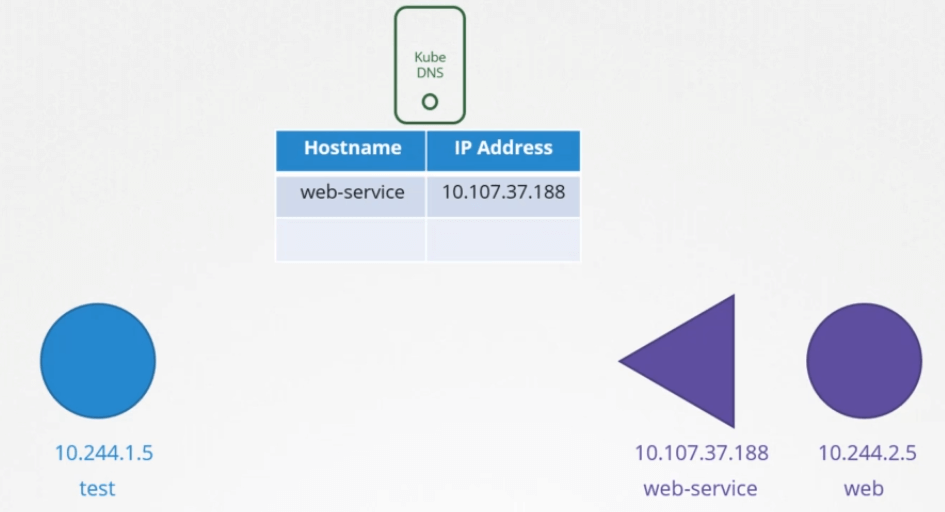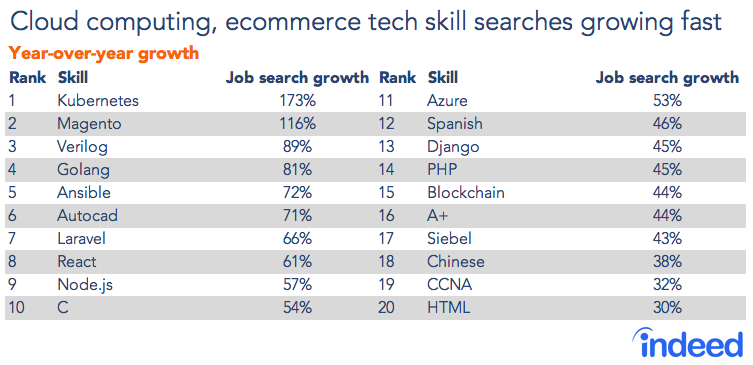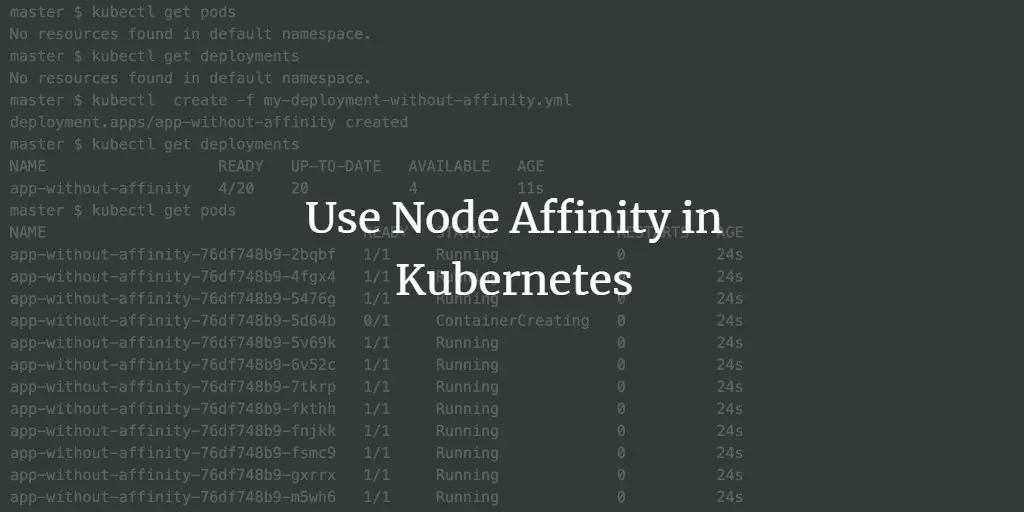43 labels and selectors in kubernetes
Using Kubernetes Annotations, Labels, and Selectors Annotations, labels, and selectors are used to manage metadata attached to your Kubernetes objects. Annotations and labels define the data while selectors provide a way to query it. Here are the differences between the three concepts, what they're designed for, and how you can use them to manage your resources. Annotations [Kubernetes]How to use Label and Selector - Example Example - How to use selector in command. [dewble @instance-1 labels]$ kubectl get pods - l app = nginx NAME READY STATUS RESTARTS AGE nginx - label01 -58 f576c6f4 - gnp7h 1/1 Running 0 6 m17s nginx - label02 -657 ccdb46 - pjvjg 1/1 Running 0 6 m17s nginx - label03 -686 d484df7 - vhj2z 1/1 Running 0 6 m17s nginx - label04 -6 ff7b6c8bf - xmhpw 1 ...
Kubernetes Core Concepts - Labels, Selectors and Annotations What are Selectors in Kubernetes? Selectors are used to filter out objects based on their assigned Labels. Labels and Selectors goes hand in hand. For example Selectors will help us filter out objects like give all the application pods which are of type staging. Example syntax to define Selectors
Labels and selectors in kubernetes
Working with labels and selectors | Kubernetes Cookbook - Second Edition Working with labels and selectors Labels are a set of key/value pairs, which are attached to object metadata. We could use labels to select, organize, and group objects, such as Pods, ReplicaSets, and Services. Labels - Unofficial Kubernetes The kubernetes.io/ prefix is reserved for Kubernetes core components. Valid label values must be 63 characters or less and must be empty or begin and end with an alphanumeric character ... Labels selectors for both objects are defined in json or yaml files using maps, and only equality-based requirement selectors are supported: "selector ... Labels and Selectors - Kubernetes - GitLab The label selector is the core grouping primitive in Kubernetes. The API currently supports two types of selectors: equality-based and set-based . A label selector can be made of multiple requirements which are comma-separated. In the case of multiple requirements, all must be satisfied so the comma separator acts as a logical AND ( &&) operator.
Labels and selectors in kubernetes. Kubernetes - Labels & Selectors - Tutorials Point Labels selector are core grouping primitive in Kubernetes. They are used by the users to select a set of objects. Kubernetes API currently supports two type of selectors − Equality-based selectors Set-based selectors Equality-based Selectors They allow filtering by key and value. Matching objects should satisfy all the specified labels. Kubernetes: Usage and Understanding of Kubernetes Labels, MatchLabels ... Labels are key/value pairs that are attached to objects, such as pods. Labels are intended to be used to specify identifying attributes of objects that are meaningful and relevant to users. Labels can be attached to objects at creation time and subsequently added and modified at any time Each object can have a set of key/value labels defined. Labels and Selectors - Kubernetes The label selector is the core grouping primitive in Kubernetes. The API currently supports two types of selectors: equality-based and set-based . A label selector can be made of multiple requirements which are comma-separated. In the case of multiple requirements, all must be satisfied so the comma separator acts as a logical AND ( &&) operator. How to Provision Node Labels and Selectors in Kubernetes? (K8s) Labels selectors are core grouping primitive in Kubernetes. They are used by the users to select a set of objects. Kubernetes API currently supports two types of selectors − Equality-based...
Kubernetes labels, selectors & annotations with examples Labels give us another level of categorization, which becomes very helpful in terms of everyday operations and management. Labels are attached to Kubernetes objects and are simple key: value pairs. You will see them on pods, replication controllers, replica sets, services, and so on. Kubernetes Labels, Selectors, and Annotations | Getting Started This will open your CLI editor of choice and allow you to add and remove labels and other details. When you save and exit, the changes will apply. Selectors As their name suggests, label selectors allow you to identify the objects you have tagged with particular labels. Label selectors can either be equality-based or set-based. Kubernetes nodeSelector Label - A Quick Guide - JournalDev Kubernetes nodeSelector label is the simplest form of technique to assign a pod to a specific node. In this technique, we first label a node with a specific key-value pair. Further, we include the nodeSelector in the Pod Specification and include the labels that are part of the Node. By this, the Pod finds and matches the labels on the node and ... Using Kubernetes Annotations, Labels, and Selectors Annotations, labels, and selectors are used to manage metadata attached to your Kubernetes objects. Annotations and labels define the data while selectors provide a way to query it. Here are the differences between the three concepts, what they're designed for, and how you can use them to manage your resources. Annotations
A Kubernetes Guide for Labels and Selectors | Datree.io Labels can be used by both Kubernetes and homo-sapiens to organize and to select subsets of objects. When dealing with Kubernetes config files, labels are always added under the "metadata" section of the manifest. Labels vs annotations Annotations are also key-value pairs that are attached to objects and are used to describe Kubernetes resources. How does Selector Works in Kubernetes? - EDUCBA 1. Label Selector. We apply labels to the Kubernetes objects to organize or select a group of objects. Labels can be attached at creation time or added and modified at any time. Labels are case sensitive. We can use Label Selector using the option '-l'. Let's create three pods with labels "env: prod" and "app: nginx-web" and two ... Kubernetes Label Selector And Field Selector | by Ashutosh Kumar ... Labels are key value pairs that can be used to identify, or group the resources in Kubernetes. In other words, labels can be used to select resources from a list. You can label Kubernetes native... What is the difference between Label and Selector in kubernetes? Labels can be used to organize and to select subsets of objects. Via a label selector, the client/user can identify a set of objects. The label selector is the core grouping primitive in Kubernetes. In a nutshell label selectors depend on labels to select a group of resources such as pods.
Labels And Annotations In Kubernetes - K21 Academy Label selectors are used for filter Kubernetes objects based on a set of labels. Selectors use a simple Boolean language. There are two kinds of selectors: Equality based and Set based. Equality based. Equality-based selectors allow filtering by label keys and values. Three kinds of operators are used: =, ==, != Example: If we wanted to list ...
Labels and Selectors — Kubernetes on AWS 0.1 documentation Labels and Selectors ¶ Labels are key/value pairs that are attached to Kubernetes objects, such as pods (this is usually done indirectly via deployments). Labels are intended to be used to specify identifying attributes of objects that are meaningful and relevant to users. Labels can be used to organize and to select subsets of objects.
Understanding Labels, Selectors and Annotations in Kubernetes There are two kinds of selectors. Equality-based and Set-based selectors. Equality-based requirement Equality based selectors help you filter resources equal to a certain key and value. You would following operators for equality based-requirements: = == != Example # this command would give us all resources with the env =prod label
Kubernetes, Labels and Selectors - Automated Ramblings Labels are a key/value formatted peice of metadata attached to an object within Kubernetes. Labels provide additional information about the object with relevance to the consumer or object. For example, a label can specify hardware characteristics of a node or if a workload is for testing of production. Labels implicitly group like objects ...
The Purpose of Labels and Selectors in Kubernetes 15 Jan 2021 • 1 min read. In short, labels are a way to group and reference an object. For instance, you could group all APIs with a label like type: api. Selectors are just a way to reference objects by labels. If we set a selector to type: api, then it would be referencing all objects with that label. This turns out to be a wildly useful ...
certified-kubernetes-administrator-course/04-Labels-and-Selectors.md at ... Labels and Selectors. Take me to Video Tutorial; In this section, we will take a look at Labels and Selectors. Labels and Selectors are standard methods to group things together. Labels are properties attached to each item. Selectors help you to filter these items. How are labels and selectors are used in kubernetes?
Labels and Selectors | Kubernetes The label selector is the core grouping primitive in Kubernetes. The API currently supports two types of selectors: equality-based and set-based . A label selector can be made of multiple requirements which are comma-separated. In the case of multiple requirements, all must be satisfied so the comma separator acts as a logical AND ( &&) operator.
Labels and Selectors in Kubernetes - HowtoForge To get Pods matching a label of our choice, we can "--selector" in the command as follows. kubectl get pods --selector environment=test kubectl get pods --selector app=nginx We can also use "-l" instead of "--selector" to get the Pods matching the label of our choice. kubectl get pods -l environment=test kubectl get pods -l environment=prod






Post a Comment for "43 labels and selectors in kubernetes"